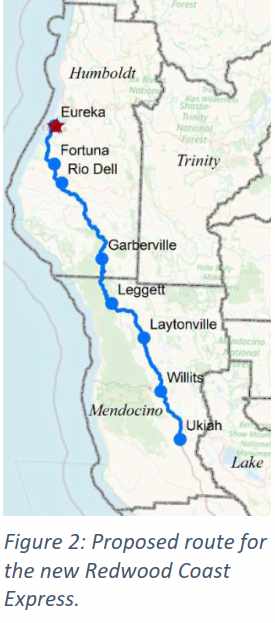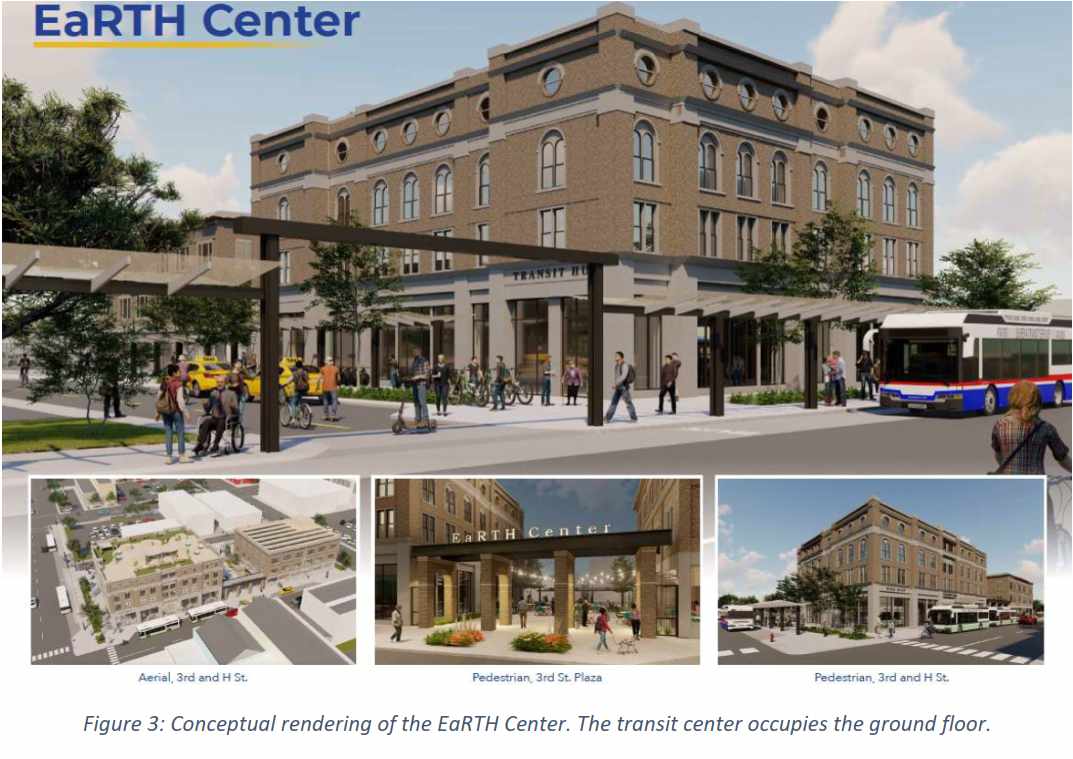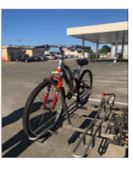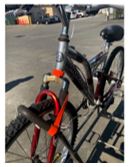Humboldt Transit Authority News
Humboldt Transit Authority Awarded $38.7M Grant for Fuel Cell Electric Buses
July 21, 2022
July 20th, 2022
2022 07 HTA TIRCP Press Release
The Humboldt Transit Authority (HTA) has been awarded a $38.7M grant from the California State Transportation Agency’s Transit and Intercity Rail Capital Program that will launch HTA’s transition to a zero-emission fleet. Coming soon to HTA are 11 New Flyer fuel cell electric buses (FCEBs) and a hydrogen fueling station at HTA’s facility in Eureka. This fueling station will include a public dispenser for light and medium-duty vehicles (cars, delivery vans, etc.) to help kick start a hydrogen fueling network and supply chain on the North Coast.
“This project is incredibly exciting for HTA – I could not be more proud of our team’s work and this opportunity for innovation. It’s truly a cutting-edge project to reduce emissions throughout our region while providing reliable service and support to more than 600,000 riders every year,” – Natalie Arroyo, Humboldt Transit Authority Board Chair.
HTA partnered with the Schatz Energy Research Center at Cal Poly Humboldt to develop the winning proposal. Peter Lehman, Founding Director of the Schatz Center, shared the excitement. “We’re delighted to be teaming with the Humboldt Transit Authority on this pioneering project.” The Humboldt County Association of Governments, Center for Transportation and the Environment, Servitas LLC, SmithGroup, and Creative Inclusion LLC also made significant contributions to the grant proposal.

HTA worked closely with transit bus manufacturer New Flyer to develop specifications for a next-generation model of their Xcelsior Charge H2TM  that will meet HTA’s demanding routes. HTA will be replacing the entire fleet of the Redwood Transit system with these new buses.
that will meet HTA’s demanding routes. HTA will be replacing the entire fleet of the Redwood Transit system with these new buses.
Fleet maintenance facilities at HTA will also be upgraded to support the new buses.
The hydrogen fueling station will be the northern-most fueling station planned in California. HTA will partner with Air Products Inc. who will design and construct the station. The station will support both bus and passenger car fueling. A fueling dispenser will be available to the public, providing a station that supports the Governor’s target of 200 hydrogen stations by 2026 serving light and medium-duty vehicles. HTA will also offer fueling to other local fleets interested in adopting fuel cell electric cars, delivery vans and other models.
In addition to laying the foundation for a zero-emission transit fleet, this grant also creates a new intercity transit service, the Redwood Coast Express (RCX), that will be served with the New Flyer buses. This service will connect local riders to Ukiah and points south, including the San Francisco Bay Area.
This grant will also construct new intermodal transit center in downtown Eureka. The center will be integrated with workforce and student housing and commercial space and enliven urban life in Eureka. The Eureka Regional Transit and Housing Center (EaRTH Center) will combine local and intercity fixed route services with on-demand, taxi, bike and scooter share, and paratransit services all centralized in Eureka’s Old Town district. This project is expected to contribute significantly to increasing transit ridership and decreasing vehicle miles traveled, two key targets in the County’s Regional Transportation Plan.

Stay up-to-date on project progress by visiting https://hta.org/projects.
Safe Streets Story (Survey)
October 7, 2021
Safe Streets Story
Help make our streets safer.
Take the 5 minute survey, tell us on Street Story!
How to Use the External Bike Racks
July 9, 2020
How to Use the External Bike Racks
Click here to view Video on how to use external bike racks
NOTE: FOR YOUR SAFETY, LOADING AND UNLOADING OF BICYCLES SHOULD BE DONE FROM THE CURBSIDE OF THE BUS.
Steps for Loading Bikes
- Prepare your bike for loading. Remove water bottles, pumps, panniers, saddle bags, and other loose items that could fall off while the transit vehicle is in motion.
- Inform the transit operator that you will be loading your bike. You must load your bike from the curb or from in front of the transit vehicle. Do not step beyond the driver’s side of the vehicle into passing traffic to load your bike.
- If the rack is in the stowed (vertical) position, squeeze the latch handle to release the latch, then fold the bike rack down. You need only use one hand to unlatch and pull the bike rack down, so that your other hand is available to hold your bike. It is not necessary to lean your bike against the transit vehicle.
- Lift your bike onto the bike rack, fitting your front wheel into a wheel slot labeled for a front wheel. The purpose of the directional placement is to make adjacent bikes easy to load and unload.
- Raise the Support Arm Hook over the front tire. The primary purpose of the Support Arm is to keep the bike secure while the transit vehicle is in motion. Some bikes may sit in the wheel tray without use of the Support Arm, but the rack must not be used without the Support Arm.
The Support Arm Hook must be between the highest point of the tire and the head tube. Incorrect Support Arm Hook placement may result in the bike falling from the rack, potentially damaging the transit vehicle or other vehicles. Place the Support Arm Hook over fenders as required to achieve the correct hook position. Some bike accessories such as front racks and baskets with vertical support stays may preclude correct hook placement. Bikes with accessories that conflict with correct support arm placement must not be loaded onto the rack.
- Secure the bike with the orange wrap strap around the fork of the bike (or other accessible component) and stick hook and loop back to itself. Wrap the velcro strap around support arm handle as shown.
- Board the transit vehicle and enjoy the ride! Choose a seat near the front of the vehicle to keep an eye on your bike. DON’T FORGET you have a bike with you when you get off at your stop.



Steps for Unloading Bikes
- Inform the transit operator driver that you will be unloading your bike as you approach your stop. Use the front door to exit the transit vehicle. Unload your bike from in front of the vehicle or from the curb, not from the street.
- Remove the Orange Velcro Strap and raise the Support Arm Hook up and off the tire and return it to its stowed position.
- Lift your bike out of the bike rack.
- Fold up the Bike-Rack for Buses if there are no bikes on the rack and no one else is waiting to load their bike. The bike rack will lock into place in the stowed position.
- Step away from the transit vehicle with your bike onto the curb.
If your bike is accidentally left on the bus, please contact our office at 707-443-0826. The office is located at 133 “V” Street, Eureka and open between Monday – Friday from 8am – 4:30pm.
**For future reference click on the “How to Ride” tab at the top right of the home page, and select “Bring your bike onboard” under Other Information**
Liability
Bike racks are provided as a convenience to bus riders. Humboldt Transit Authority is not responsible for: the theft or loss of bikes; damages incurred to bikes while on the transit system or at a bus stop; damages to bikes during loading or unloading; or injury to the rider during loading or unloading a bike. Riders will be responsible for any damages or injuries to third parties caused by the rider or bike while loading or unloading the bike, or failing to secure the bike on the rack correctly.



